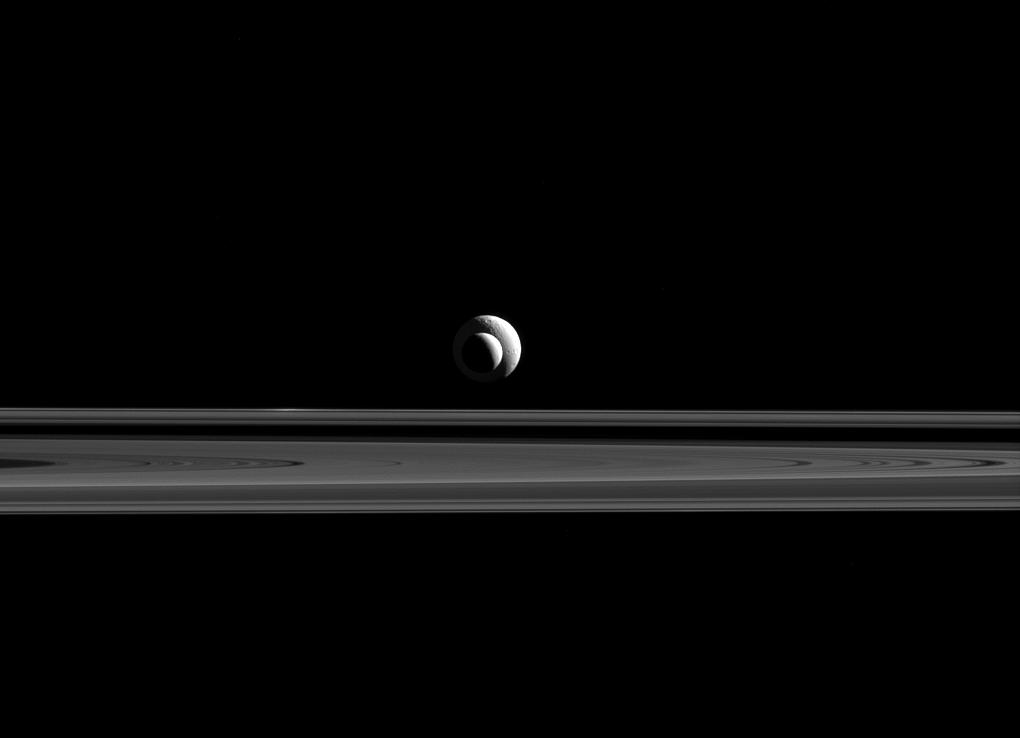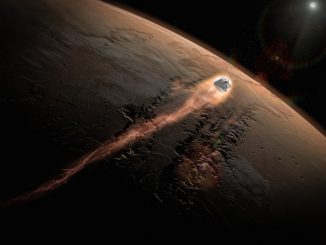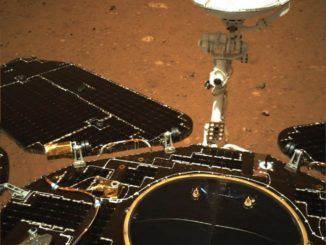
NASA has released an image of Saturn’s moons Enceladus and Tethys caught in a rare alignment by the Cassini spacecraft, which is heading for its final close encounter with the icy moon Enceladus Saturday.
Taken Sept. 24, the image from Cassini shows Enceladus eclipsing Tethys, which were about 300,000 miles (500,000 kilometers) apart at the time of the picture.
Tethys, the larger of the two moons, measures about 660 miles (1,062 kilometers) across, while Enceladus has a diameter of 313 miles (504 kilometers). NASA says the appearance of the moons in the Cassini photo accurately shows their relative sizes as the spacecraft flew more than a million miles away from the pair.
Cassini is on track for its last close flyby of Enceladus on Saturday, when the spacecraft will pass within 5,000 kilometers, or about 3,106 miles, of the icy moon.
The probe’s Composite Infrared Spectrometer, an instrument that seeks out heat signatures, will scan Enceladus’ south polar terrain during Saturday’s encounter. Scientists want to measure the heat flow from the moon’s deep interior, and study how the thermal energy drives geysers erupting from fissures near Enceladus’ south pole.
Scientists count Enceladus — with a global ocean of liquid water buried underneath an icy crust — among the most likely places in the solar system that could harbor microbial life.
Cassini’s last visit to Enceladus in October took the spacecraft just 49 kilometers, or 30 miles, above the south pole on a trajectory through plumes of ice and dust lofted by the eruptions. The goal of the flyby was to sample the material and search for organic molecules, the building blocks of life.
Researchers believe hydrothermal vents at the base of Enceladus’ ocean could be an energy source for microbial life.
Cassini is adjusting its orbit around Saturn, moving it away from Enceladus and the gas giant’s other smaller moons. A series of flybys of Titan, Saturn’s largest moon, is on tap next year, then the spacecraft will dive inside Saturn’s rings for the first time for a final science campaign before diving into the planet’s hydrogen-rich atmosphere to end Cassini’s mission.
Email the author.
Follow Stephen Clark on Twitter: @StephenClark1.



